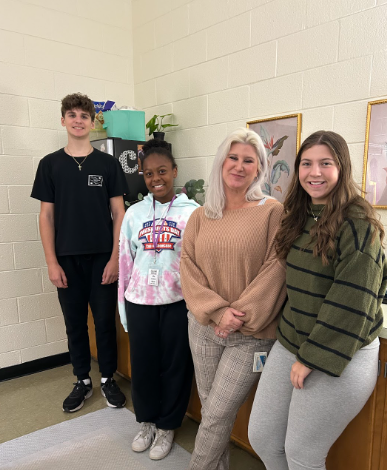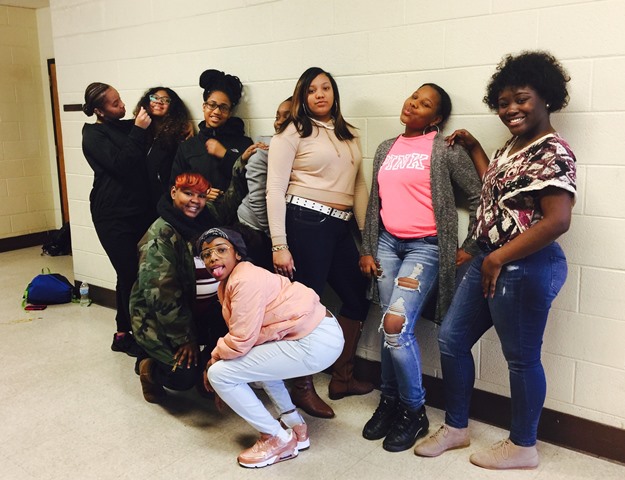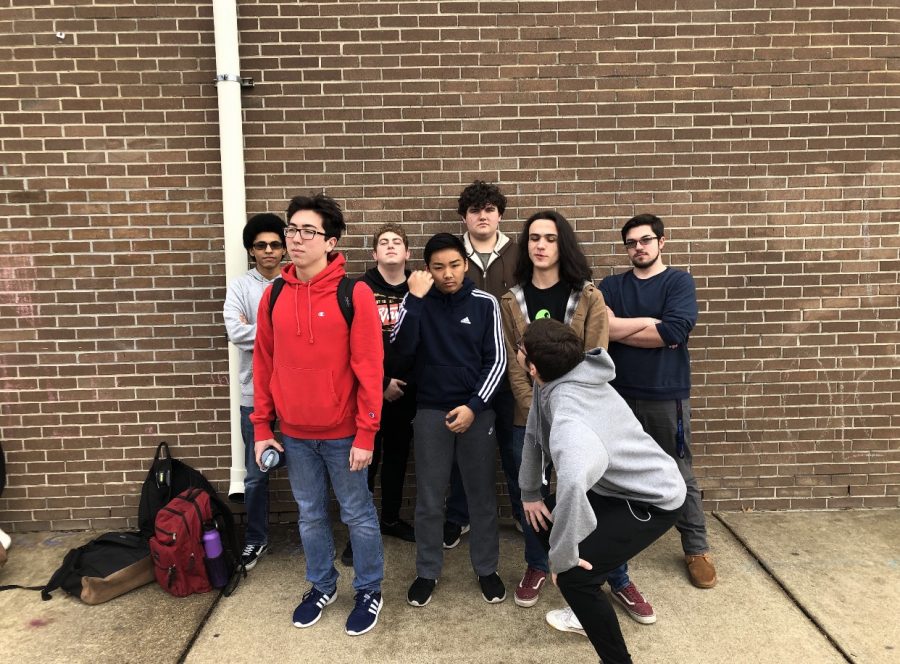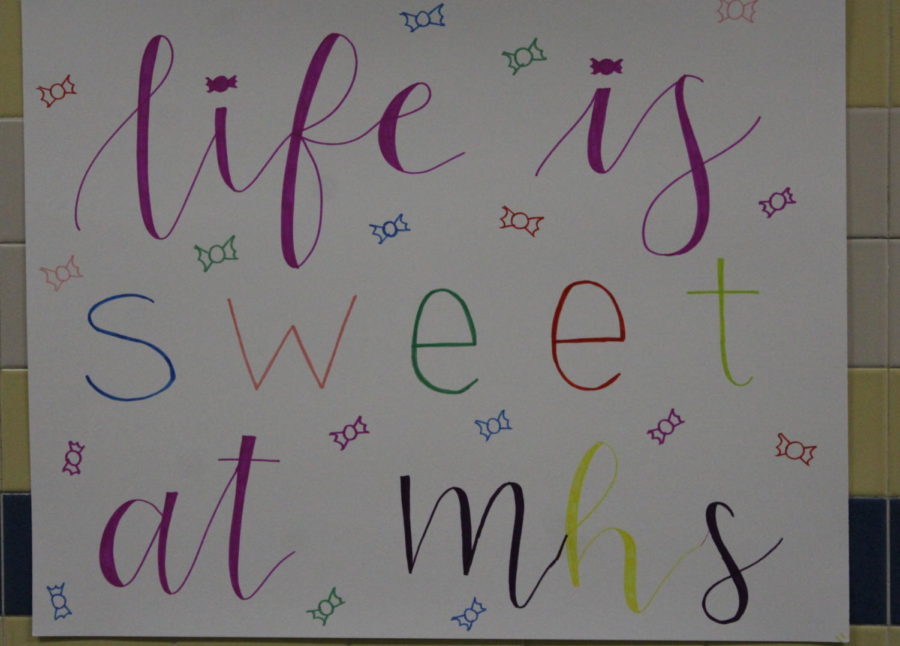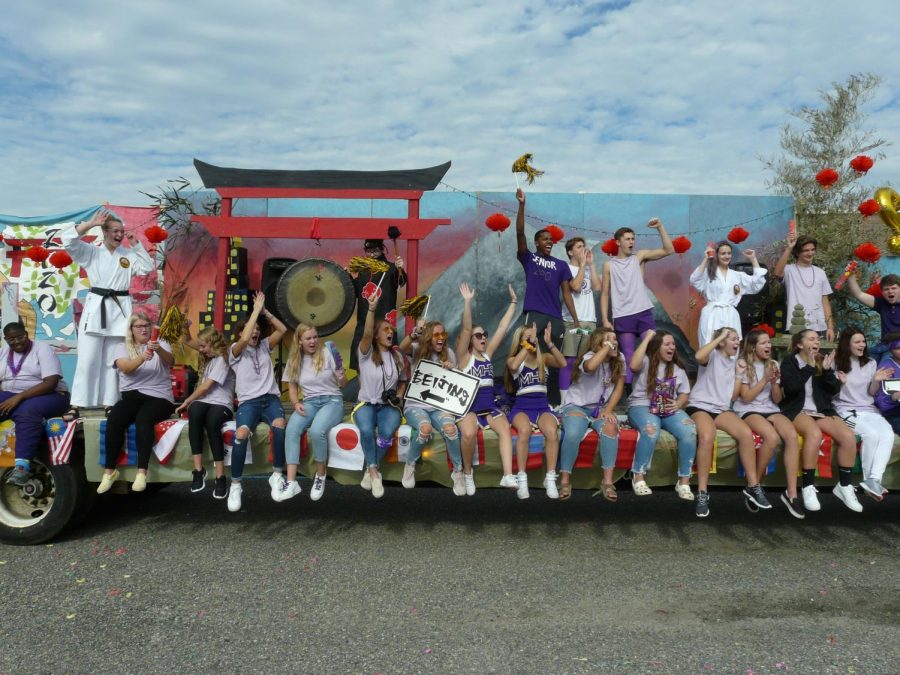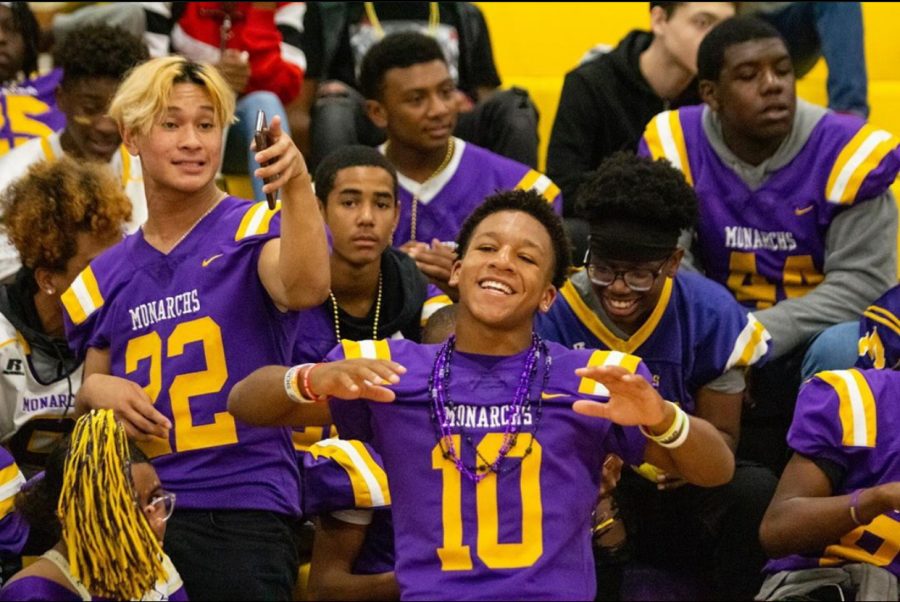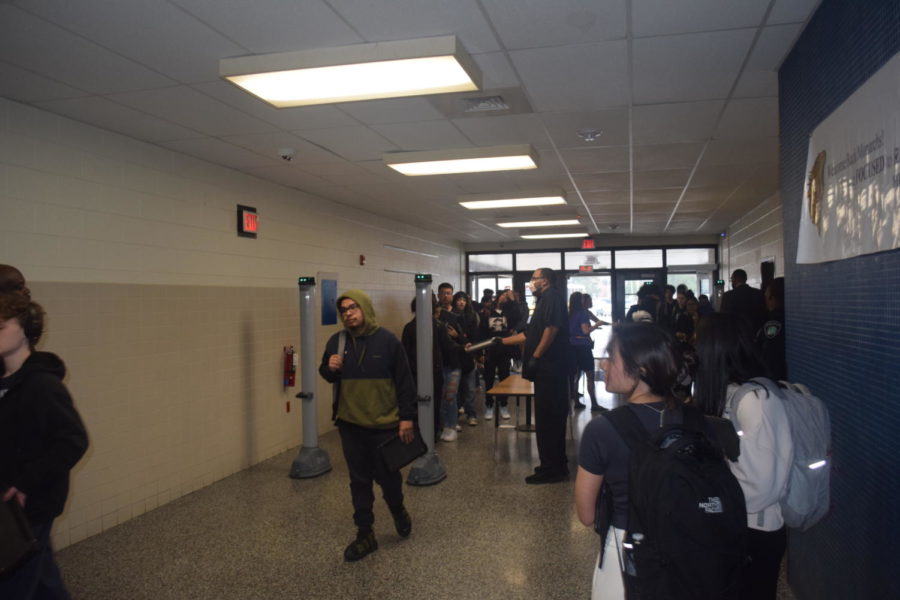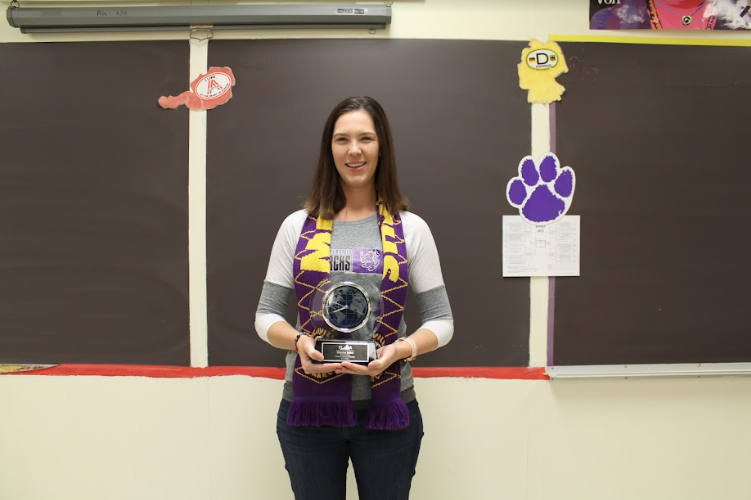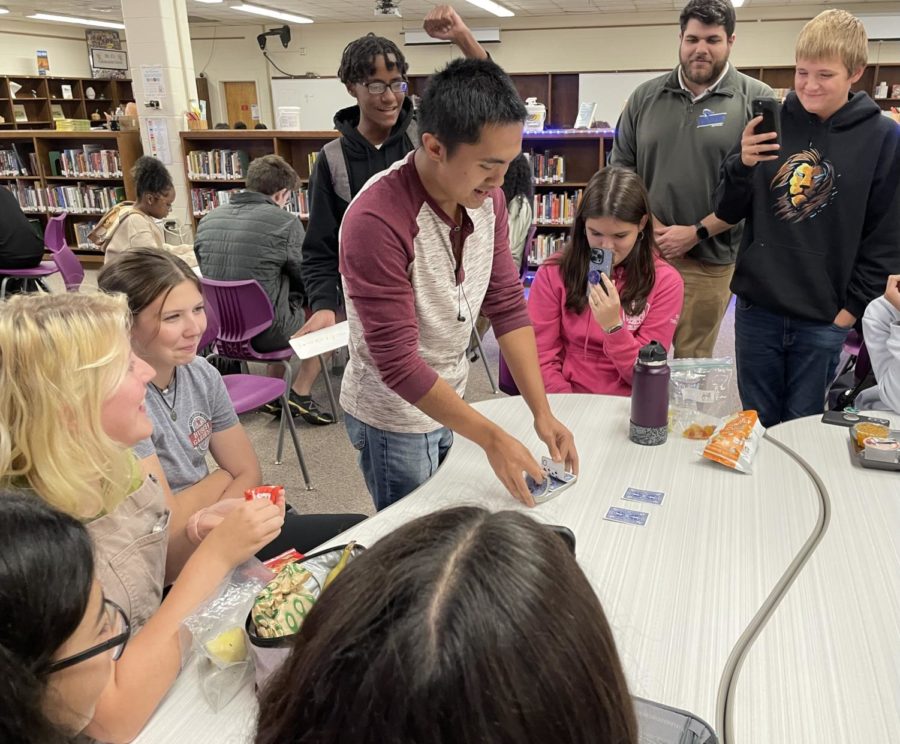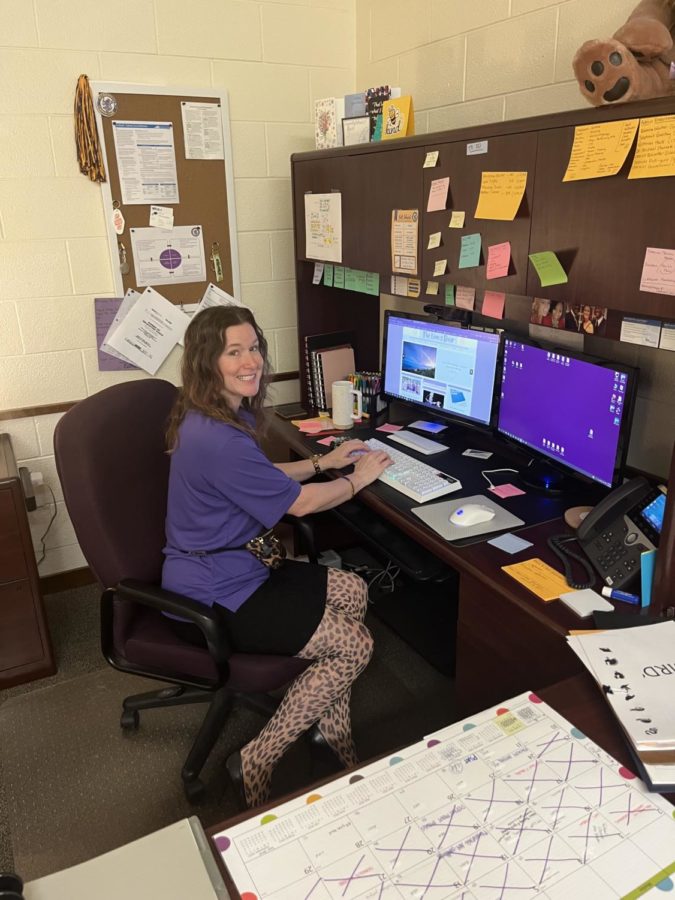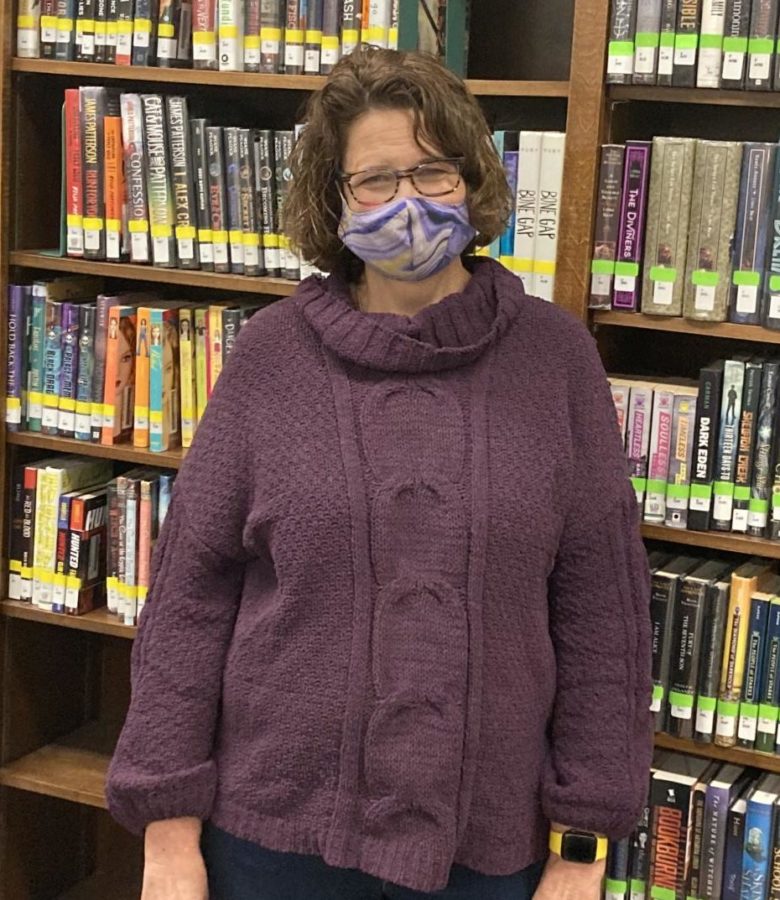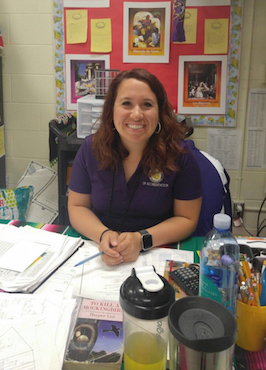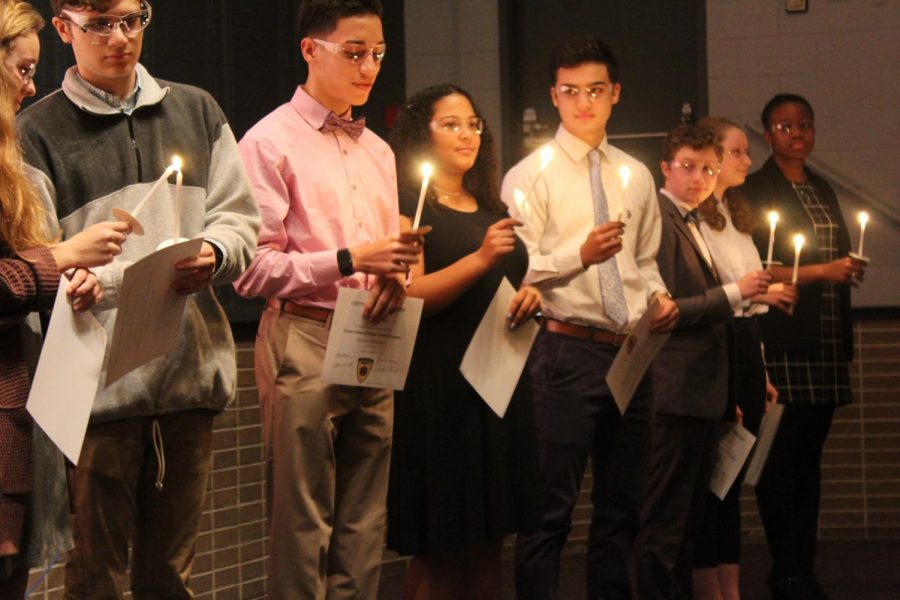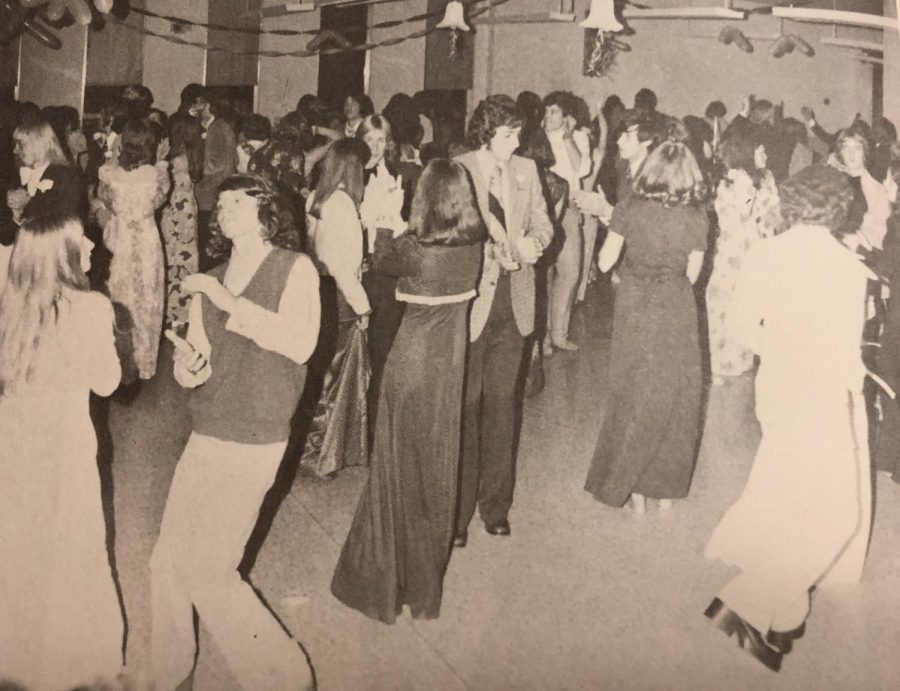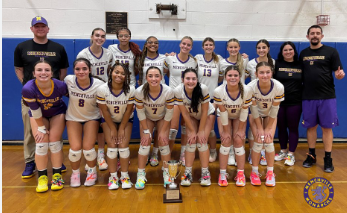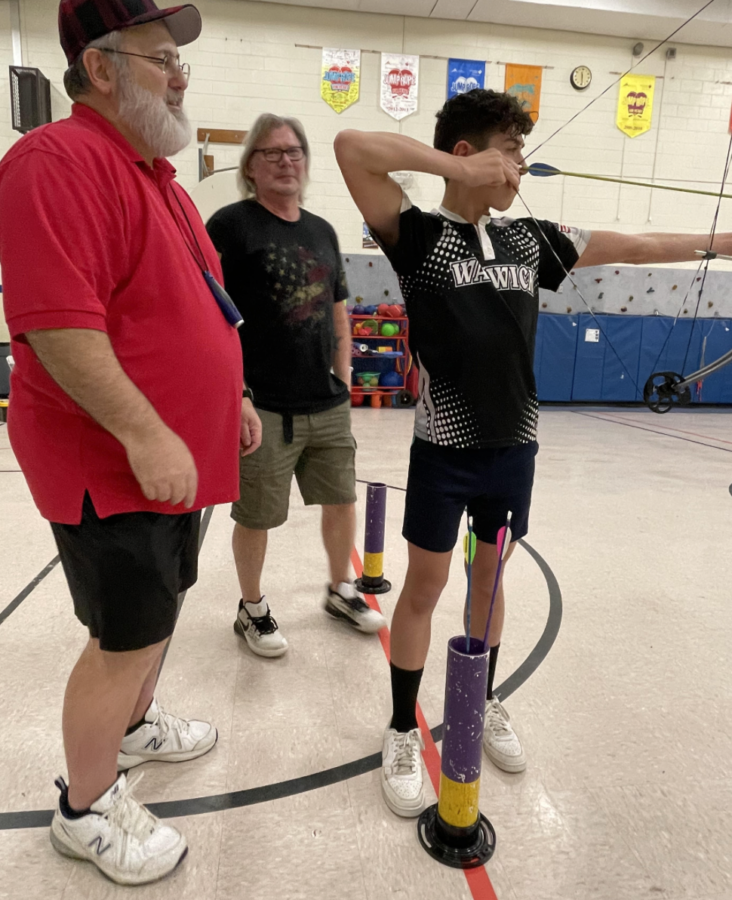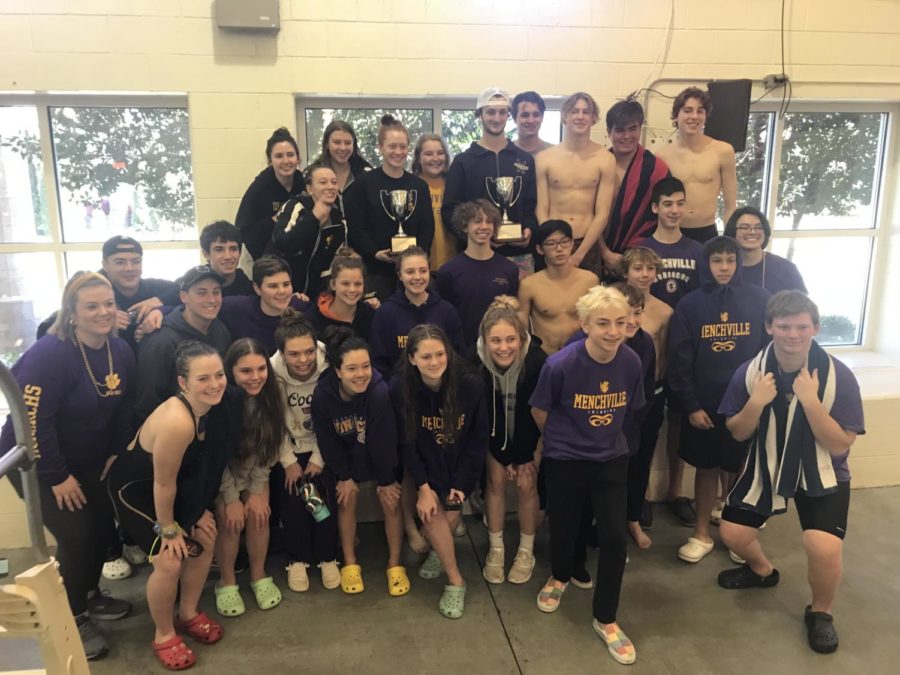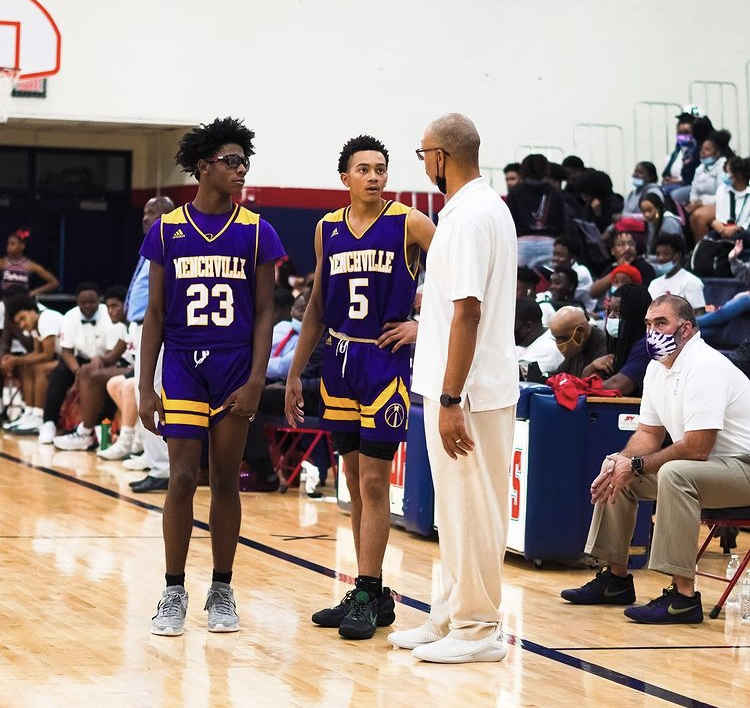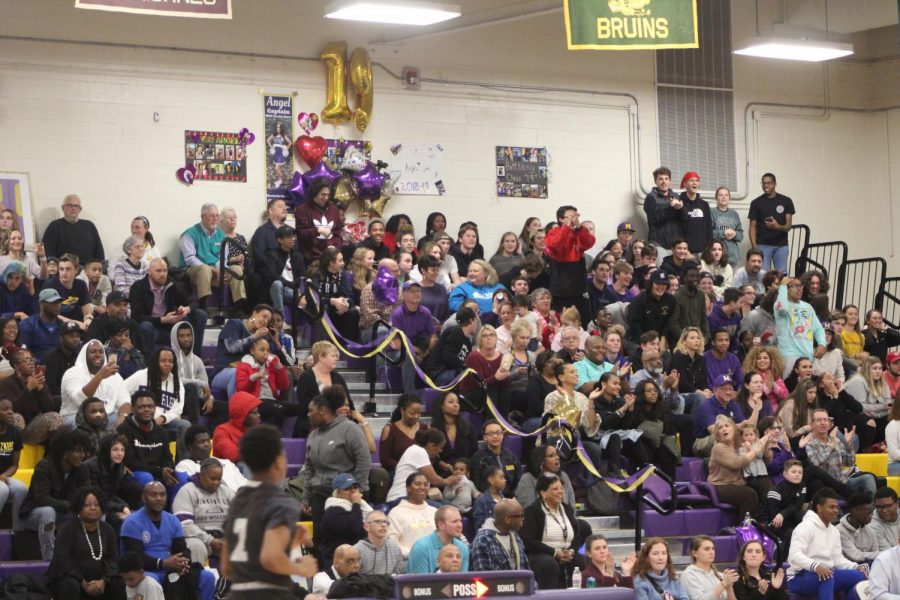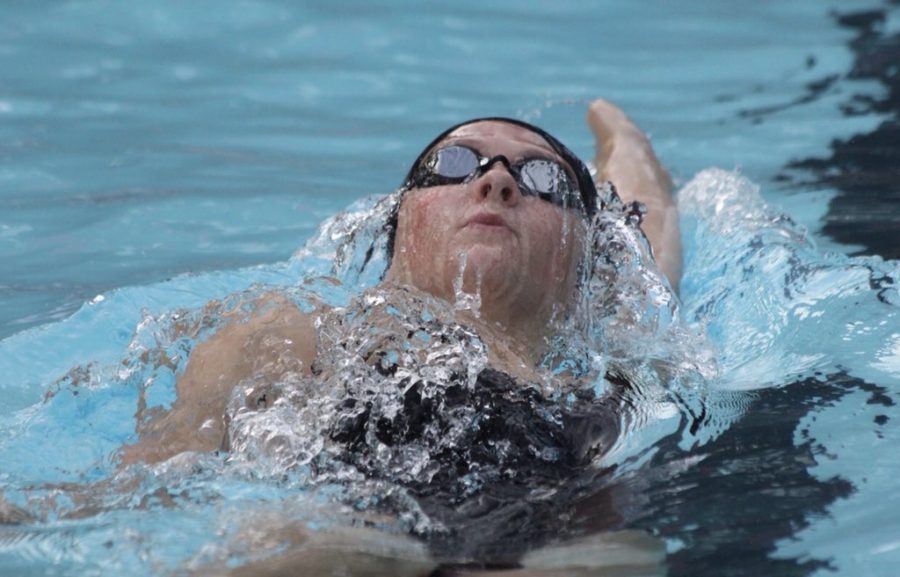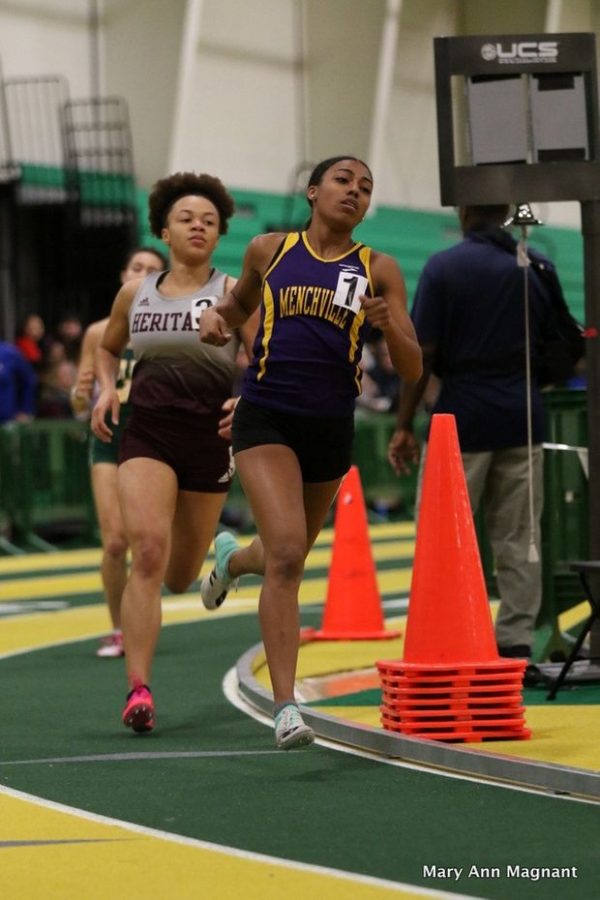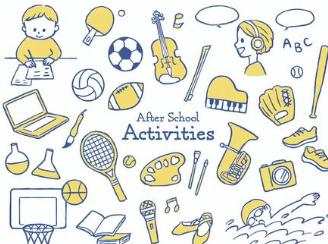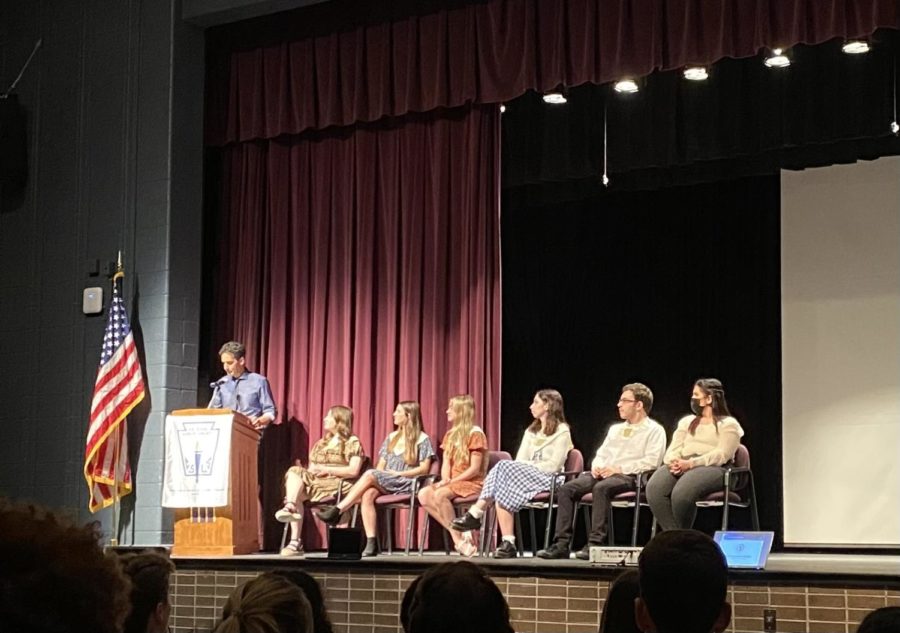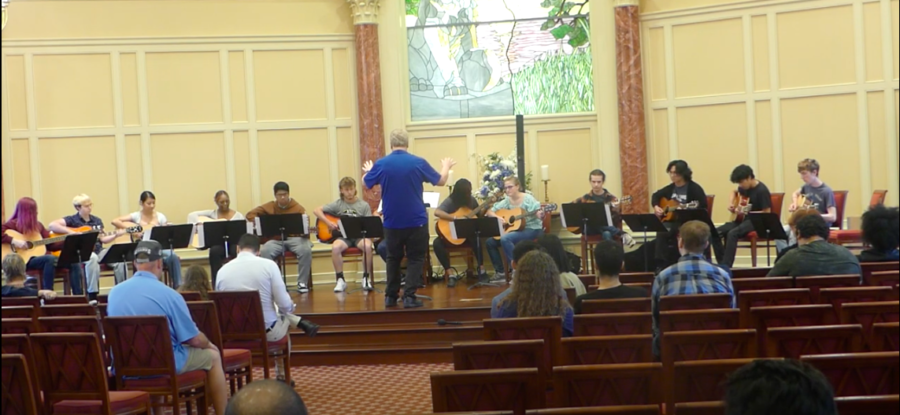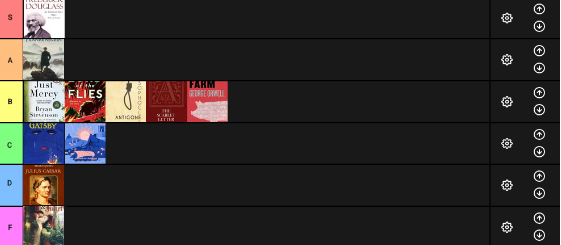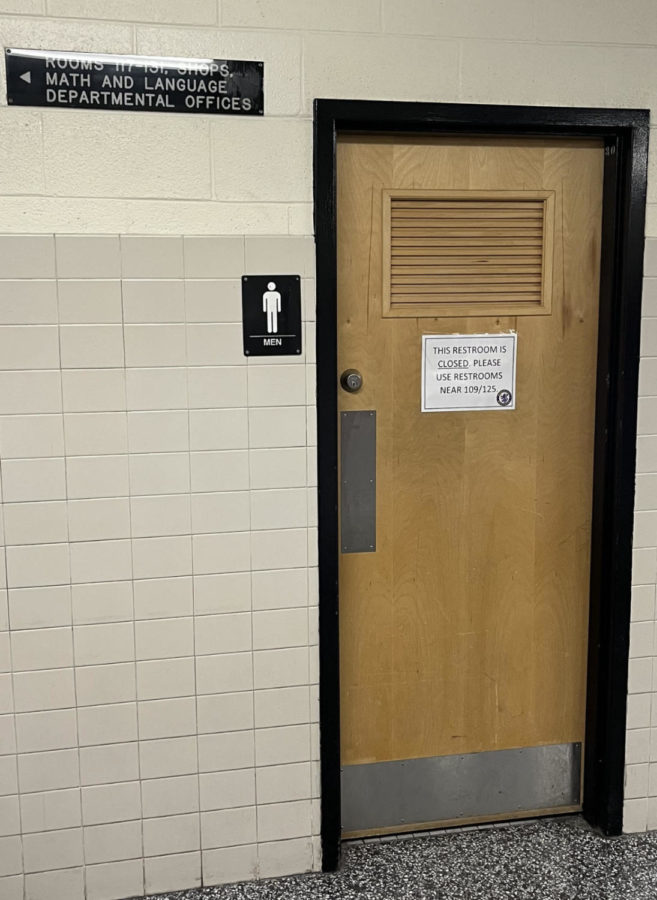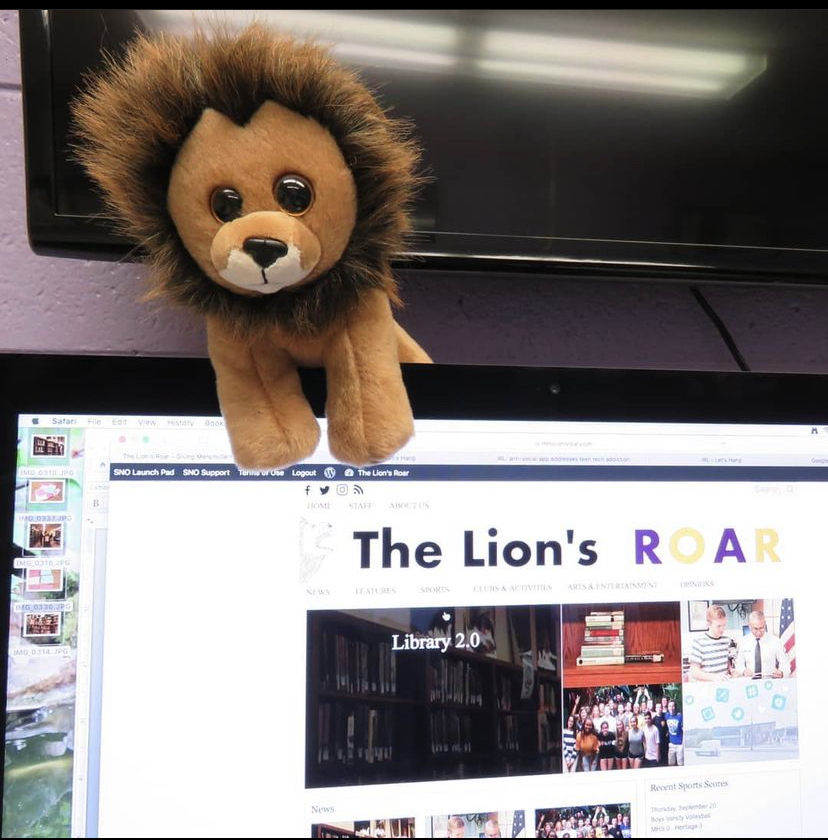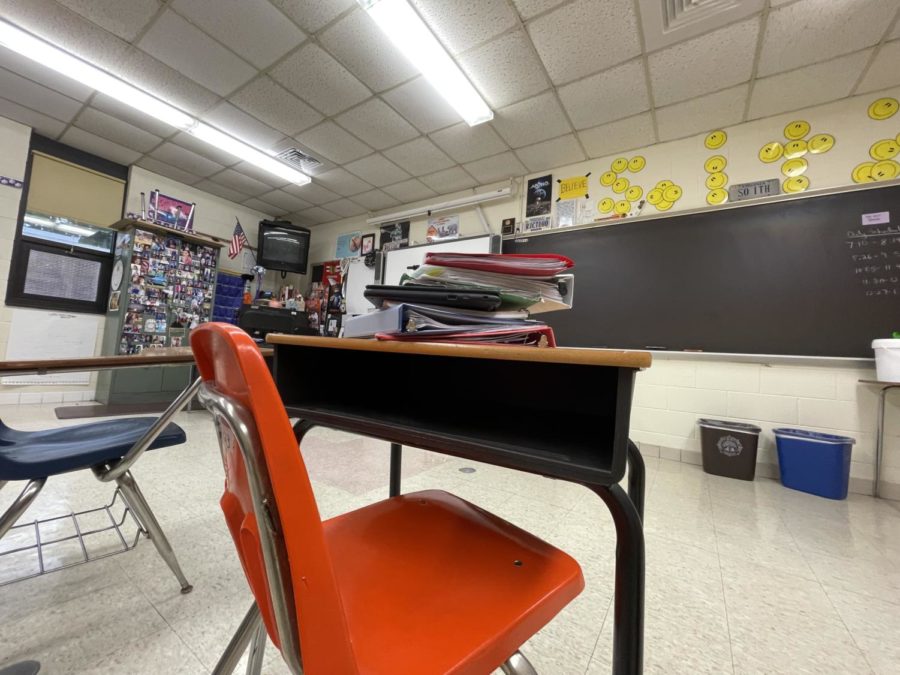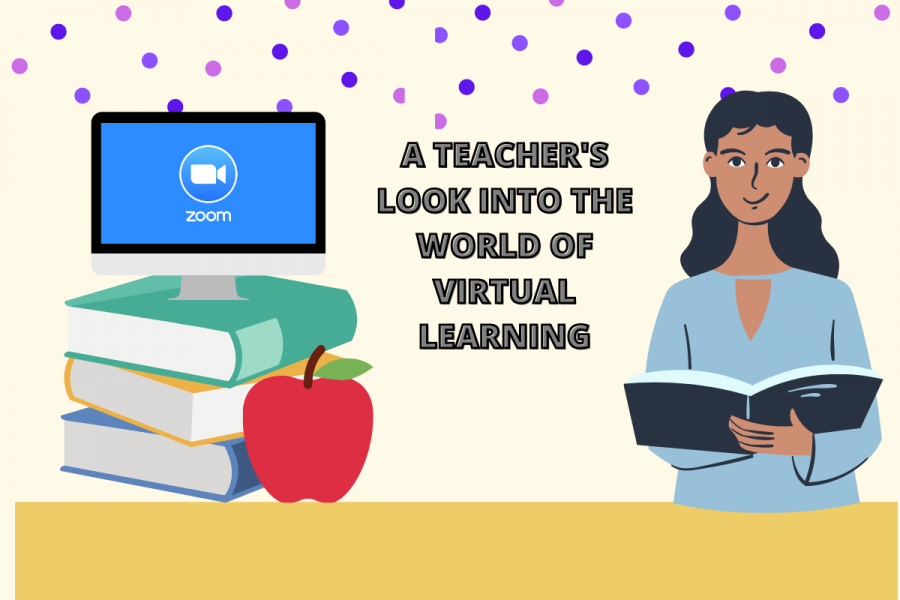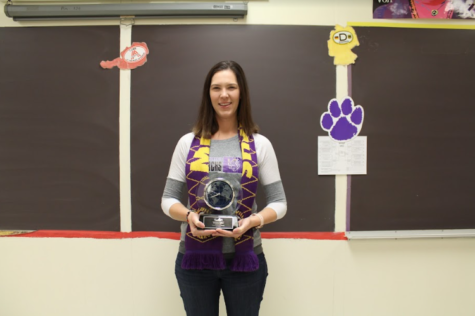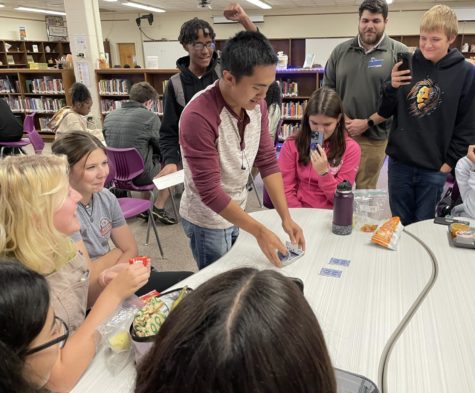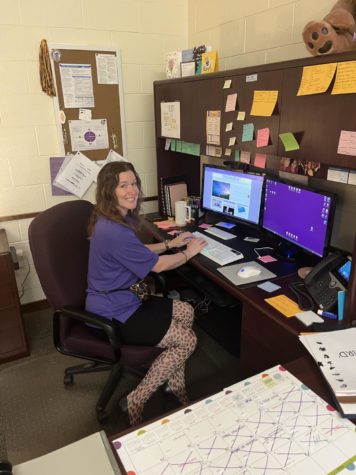Virtual Learning: A Teacher’s Perspective
Teachers provided feedback on the successes and struggles of virtual school.
The change to virtual learning for this school year has been a strange and sometimes difficult experience for both students and teachers. Attending an online classroom versus being present in person comes with new perks and challenges. Over the past few weeks, staff writers at the Lion’s Roar asked Menchville teacher’s opinions about the new normal for standards of learning.
As students made way into the virtual classrooms, teachers prepared for the abundance of questions zooming towards their inbox. Learning virtually does not provide the same learning experience as face-to-face discourse, so many lessons that would have normally taken place in person have undergone adjustments to fit the online curriculum. Teachers have had to be creative to get to know their students without making them feel any pressure or unease, and find lessons and games that help them break the ice. Katie Garner (Spanish) discovered success with Quizlet Live and instructed vocabulary. Her students turned on their microphones on and engaged in the lesson by speaking Spanish and repeating vocabulary words after their teacher.
Peter Mercier (Guitar) has been able to find ideal lessons and activities for a virtual environment, but the search for effective lessons is difficult and time-consuming. “Getting (students) to do projects that get (them) recording, and creating music that (they) can use like, in a virtual portfolio, are the kinds of projects that I think are ideal for this virtual environment.”
Still, there are experiences that are difficult to replicate in a virtual classroom.
One of the experiences that students in Mercier’s guitar classes miss out on are on-stage performances. When students join his music class through a computer, they may be able to pick up on the lessons and learn the curriculum material, but they miss out on concerts and performances. “That’s like the coolest part I think of being a musician, is getting out there and playing for people…the missing out on collaboration and making music as a group is the biggest drawback.”
Michelle Wiatt’s (Computer Art) class has also changed due to the online switch. In the classroom, Wiatt explained, “We can do things by hand, print out digital things and manipulate them, or create things and scan them in to use later, which we can’t really do without a scanner or printer.”
The general consensus among teachers is that the learning experience is simply not the same. With in-person learning, teachers can develop interpersonal relationships with students. Virtual classrooms hinder this kind of interaction and make it difficult to instruct or connect with students.
“I like seeing students, learning their names, seeing their style, talking to them. It is very hard to teach to names in a black box,” said Wiatt. Virtual learning provides students with an opportunity that they don’t have in-person, the option to hide their faces behind a computer screen. Students enjoy the ability to turn off their computer cameras, but this option leaves teachers staring into a blank void of black screens with names, which can make teaching difficult. Susan Traner (English) explained that without being able to see the faces of her students, she is unable to read their reactions and body language, thus making planning her lessons and adjusting for the needs of her students extremely challenging.
Sabra Moriarty (English) concurred, “Even if students just unmuted once in a while to ask questions, give the teacher feedback, or tell the teacher if they understand or not, that would be super helpful and let the teacher know they are not alone!”
Most teachers agree that one of the most helpful things that students can do for their teachers is to turn on their cameras and microphones when they can. “If they talk or use the chat more to generate ideas or ask for help more, if they showed their faces, that would be tremendously helpful,” continued Traner. In order for teachers to teach their lessons in an effective manner while adjusting them to meet their students’ needs, participation, and feedback from students is desired and appreciated.
A month into virtual learning, many teachers still haven’t gotten to know their students due to the lack of active cameras and face-to-face interaction, instead, they rely on emails to communicate with students outside of class. Alice Shepley (Spanish) said students need to know that added context in emails would be incredibly helpful. When students are emailing teachers, they need to include a proper greeting, the class period that they’re in, and any other information that helps the teacher identify the students. “When I see a name come through, I have to flip through my handmade attendance and see what period they’re in,” she said. “That’s something that kids don’t think of, they think we know you, and I used to, I used to know everyone who was in my second-period class. I have no idea now because it’s all just blank screens, I don’t know who you are yet.”
Learning from behind a screen not only affects students’ understanding of their classes, but it can also affect their work ethic. When lessons are being taught through a screen, it makes it much easier for students to tune out or get distracted by something else. Arram Dreyer (Government) continues to encourage his students to pay attention and do their best work. “I think the thing I want students to understand the most is that the only person who can really help them succeed is themselves. They have to want to learn and want to push themselves to the next level. If they do that, anything is possible.”
Teachers also find the technological aspect of virtual school challenging due to heavy reliance on various online programs like Canvas, Zoom, and Google Meet. As if having to learn to navigate new websites like Canvas and finding new ways to send and receive assignments and information wasn’t difficult enough for both students and teachers, technical difficulties and computer problems can create additional stress and uncertainty.
“Canvas itself has some great features but there’s so many options, and there’s so many glitches,” said Traner. “Every day you’re sort of thinking ‘what’s not going to work right today?’”
On a more positive note, there are some perks and changes that teachers find easier in the new virtual learning environment.
Some teachers have enjoyed the adjustment to online lessons and their usage of Canvas, a system specifically designed for online learning. The process of planning of virtual lessons can cultivate creativity and an opportunity to make engaging lessons. Coach Solaas (P.E.) felt warmly about the new opportunities available for her to review lessons with her students. One example of lesson personalization she has used recently is the integration of guest speakers.
Moreover, students and teachers have easy access to lessons and activities. Teachers can reach their students from settings outside of the traditional classroom. Fanny Limon-Deparcmeur (French) finds this aspect worthwhile. “All the assignments are on Canvas, so if a student misses a class, he or she has direct access to the lesson and activities,” she stated. Julie Eichenlaub (History) no longer has to commute from 40 minutes away. “I like the flexibility, I can teach anywhere really,” remarked Wiatt.
In these trying times, it can be easy to feel overwhelmed with uncertainty and stress. Teachers are working to lead students in between homes and classrooms while navigating financial difficulties and personal loss. Despite difficulties, the staff has shown overwhelming perseverance. From exercise to spending time with loved ones, teachers have discovered healthy ways to relieve stress.
Teachers commonly utilize exercise and nature to escape the stress of work and uncertainty. Dreyer runs about 50 miles a week, and Shepley regularly walks around her neighborhood to enjoy the fresh air and sunshine.
“It’s so important to at least see nature and hear the sound of the wind and the birds, so I will get myself out on the back porch a little bit,” said Shepley. “We’re all trying, I think, to cultivate a little bit of rest in our hearts and beauty in our world in the middle of a harder thing.”
Teachers also rely on love and support from their families, and make time away from their computers to spend with their loved ones. Mercier spends the majority of his free time playing outside with his children and enjoying the company of his family. Solaas makes sure to separate her home life from work and take time away to relax. “I have placed time guidelines on myself when I open and close my work computer. Since I have been working from home, I make it a point to separate work time from family time.”
Not only is support from family important, but support and advice from colleagues and other teachers is crucial for teachers to see how others deal with this challenging period and to remind them that they’re not going through this alone. It’s important for teachers to be able to lean on one another and work together to successfully get through the year.
“I think doing group chats with colleagues where we kind of build each other up and support one another has been really critical,” said Traner.
The year 2020 has been a tumultuous experience since the very beginning, and in turn, the new school year has had to undergo major adjustments to ensure safety for faculty and students. Ken Zoby (Math) summed up the experience, “I’ve accepted that this is what it is. I think some people aren’t accepting that this is what it is. There are pros and cons. I’ve dealt with it by accepting it. After class, I go out and get fresh air. I walk and exercise and do things to get over it. I know I can’t stay hunched over a computer all day long.”

Committed to graduate in 2021, Kailani Vera is a first-year staff writer with an interest in journalism. Her hobbies include watching movies, playing lacrosse,...

Committed to graduate in 2021, Beth Ellis is a fourth year staff writer for The Lion's Roar. She has always had a passion for writing and taking photos,...

